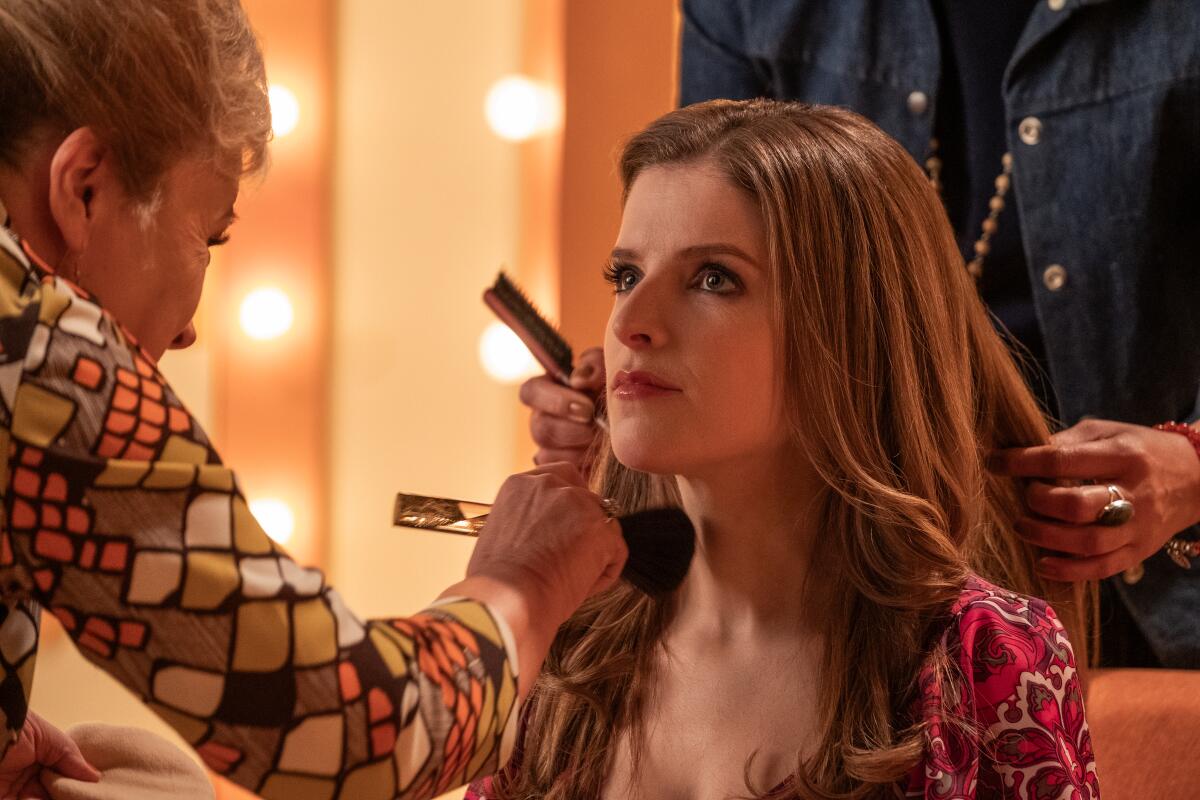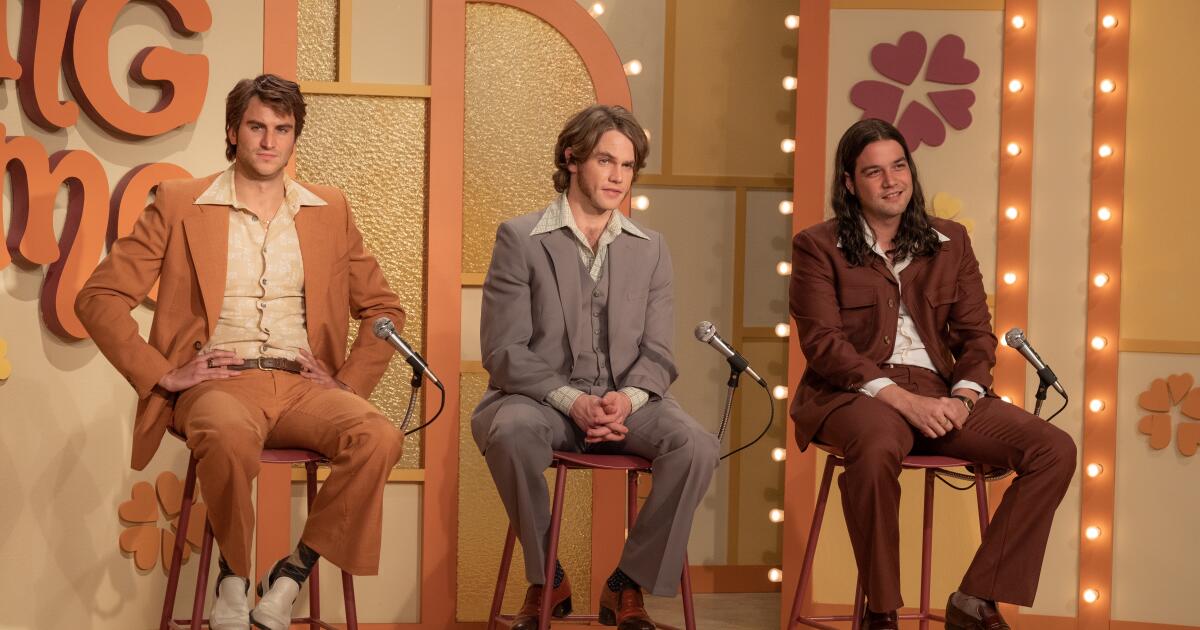In the telling of any true story in cinema, though, creative liberties are bound to be taken. So we compared the real-life case of Rodney Alcala with “Woman of the Hour” to determine what’s fact and what’s fiction in the film.
Did Alcala work at the Los Angeles Times?
One scene in “Woman of the Hour” depicts Alcala working at The Times in 1977, a year before his 1978 appearance on “The Dating Game.” It’s unclear what his position at the newspaper is, but his colleagues seem impressed by him as he weaves tall tales of knowing Warren Beatty and shows off his photography. (Many of the images are of nude women.) The scene suggests that Alcala exaggerated his role at the newspaper to gain access to his subjects.
Despite not using an alias and having prior convictions, Alcala was hired by The Times as a typesetter in September 1977. According to a “20/20” episode on “The Dating Game Killer,” Alcala did indeed bring photos of nude women into the office, though they were seen by his colleagues as artistic in nature and not a warning sign about his state of mind. He likely used his job to ensnare at least one of his victims: Pamela Jean Lambson met Alcala in October 1977, and former Marin County Det. Richard Keaton recalled that Lambson was excited about the opportunity Alcala offered her, showing off the photographer’s business card to her stylist. Her body was found the next day. It’s not entirely clear when Alcala left the paper, quitting sometime before he killed Robin Christine Samsoe in 1979.
How accurate are “The Dating Game” scenes?
“Woman of the Hour” takes significant creative liberties when exploring the pivotal “Dating Game.” Some of these are minor adjustments for dramatic effect; making Alcala Bachelor No. 3, when he was actually No. 1, helps the film build to the reveal of Alcala’s face on the panel. The change of prize also ups the stakes: Sheryl and Rodney win an all-expenses-paid trip to Carmel when the real prize was tennis lessons and tickets to Magic Mountain theme park. One accurate aspect of the episode’s depiction? According to fellow contestant Jed Mills, Alcala really did tell him “I always get my girl.”
As for Sheryl going on “The Dating Game” to bolster her profile as an actor, what may seem absurd today was not uncommon then. Her agent points out that it worked for Sally Field, who appeared in a 1966 episode of the show (alongside bachelor Robert Vaughn of “The Man From U.N.C.L.E.” fame); many other stars went on the show before they found superstardom as well, including Farrah Fawcett, Steve Martin, Suzanne Somers, Burt Reynolds and Arnold Schwarzenegger.
The largest change in “The Dating Game” is in Sheryl herself. In “Woman of the Hour,” she rewrites the script and asks her own questions, including a tricky one about special relativity and “What are girls for?” At least as seen in the surviving clips of the original episode, the real Cheryl appears to lean into the show’s conventions, flirtatiously playing along with the game. Knowing the context of Alcala’s actions, this is even more chilling than the film: At one point, Cheryl asks Rodney to act like a dirty old man, resulting in a moment that would likely be dismissed as too outrageous if it were re-created for the film.

Anna Kendrick as Sheryl in “Woman of the Hour.”
(Leah Gallo / Netflix)
Did a woman recognize Rodney in “The Dating Game”?
Kendrick has said that Laura represents those affected by such crimes, as well as those who tried and failed to draw authorities’ attention to Alcala over the years. (Laura’s friend whom Alcala killed was, however, based on a real person.) Numerous people reported Alcala in relation to assaults and killings over the course of more than a decade before he was finally put away for good in July 1979.
In fact, Alcala had a criminal record even before he appeared on “The Dating Game,” serving stints in prison for assaults on two girls and becoming a registered sex offender. (In both cases he was paroled.)
How did Alcala get caught?
Amy, the teenage runaway seen at the end of “Woman of the Hour,” is based on the real-life Monique Hoyt, who did in fact escape Alcala and report him to the police — leading to his arrest in February 1979. But as the post-film text reveals, that wasn’t the end of his crimes. While awaiting trial, Alcala was released on bail and proceeded to kill again. On July 24, 1979, he was arrested for a final time for the murder of 12-year-old Robin Samsoe. Police discovered a storage unit in Seattle that belonged to Alcala, filled with damning evidence and trophies of his kills. Alcala received the death sentence at trial, but a series of appeals, reversals and subsequent trials left Alcala in prison until 2019, when California placed a moratorium on capital punishment. Alcala ultimately died in prison of natural causes in 2021.
In the end, Alcala was found guilty of seven murders, though it’s believed the real number of people he killed is significantly higher. One day the mystery may be solved: the Huntington Beach Police Department released Alcala’s photographs in 2010 in hopes that people who recognized them would come forward and identify some of the victims.
“Woman of the Hour” states that some authorities estimate up to 130 people were killed by Alcala.






